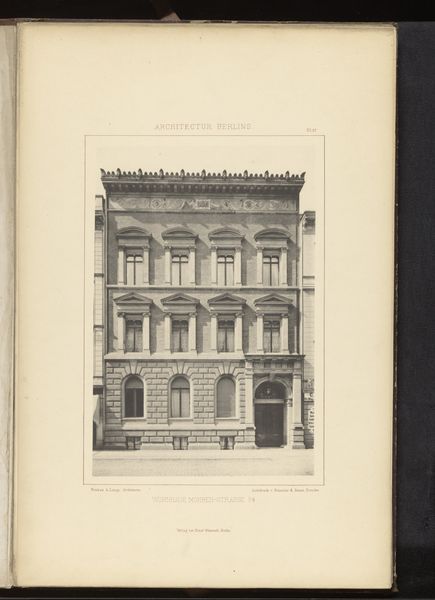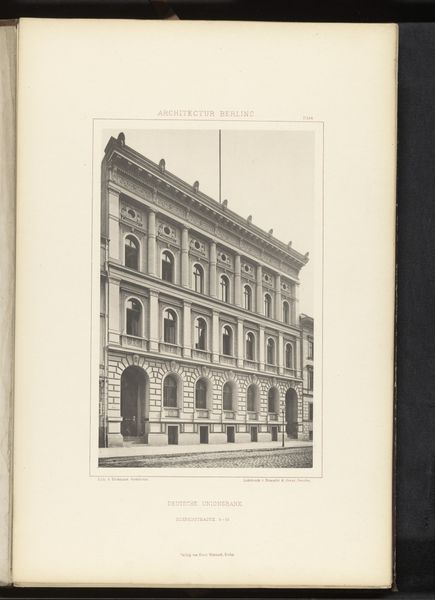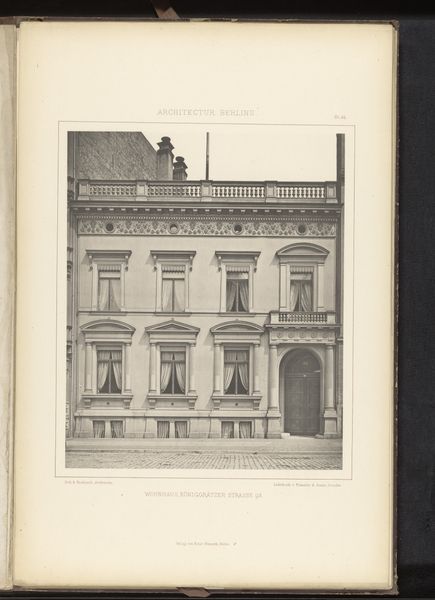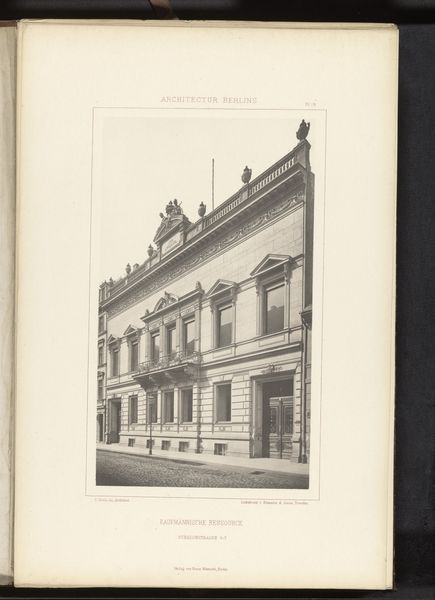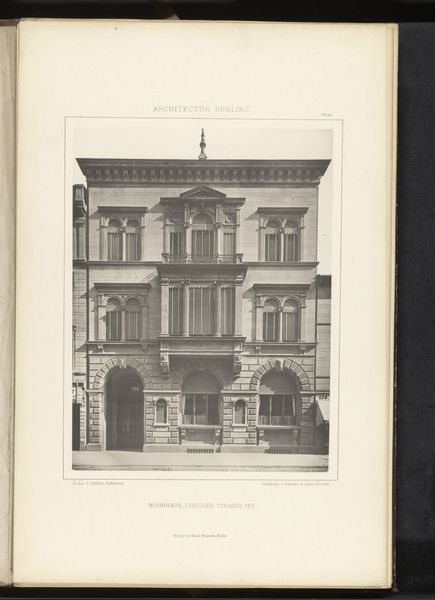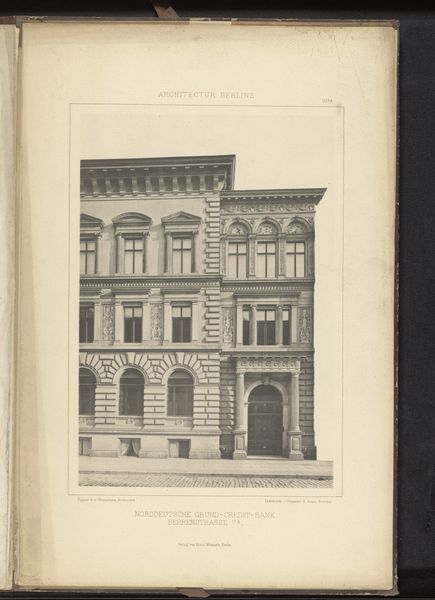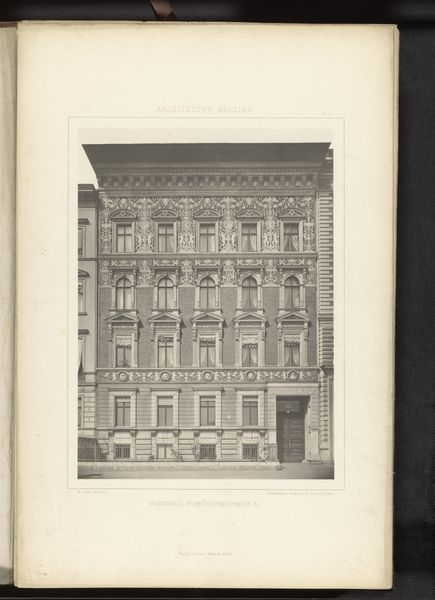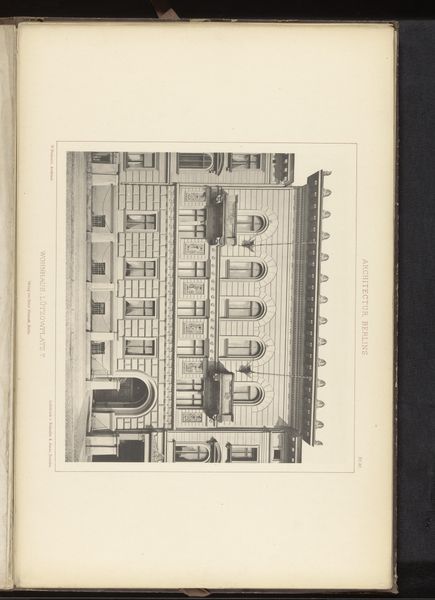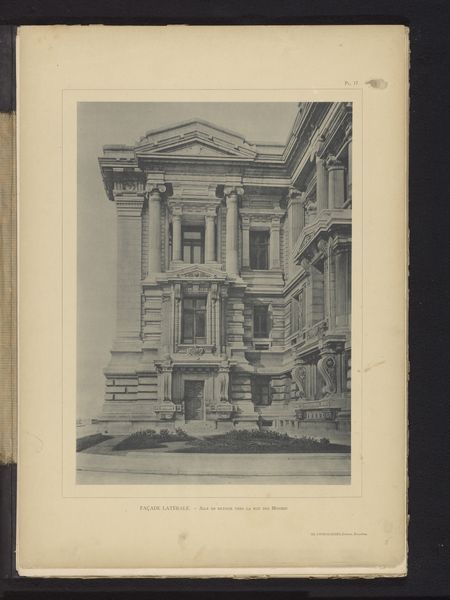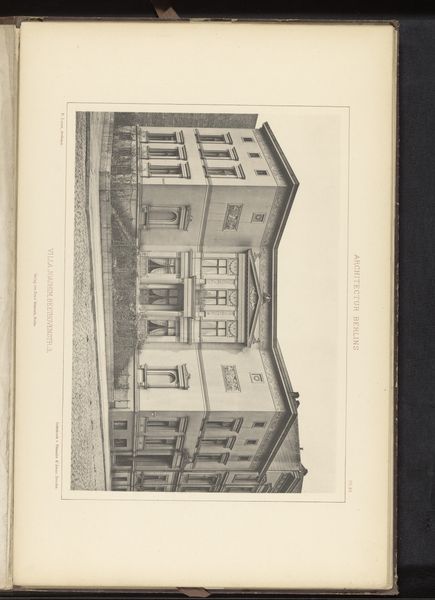
Gezicht op een woonhuis aan de Lützowplatz 13 in Berlijn, Duitsland before 1877
0:00
0:00
Dimensions: height 265 mm, width 217 mm
Copyright: Rijks Museum: Open Domain
Editor: This is an engraving titled "Gezicht op een woonhuis aan de Lützowplatz 13 in Berlijn, Duitsland," made before 1877 by an anonymous artist. It’s currently housed at the Rijksmuseum. It depicts a very orderly, symmetrical building facade. What do you see in this piece from a historical perspective? Curator: Well, considering its place within art history and the socio-political context of the time, it's interesting to see how the image functions almost as an architectural record. The precision suggests an almost clinical approach to documentation, which might be reflecting the rising importance of urban planning and civic administration in late 19th-century Berlin. Notice the building's clear design elements - they speak to a sense of civic pride. Editor: So, the very act of depicting this building reinforces certain values? Curator: Precisely. It promotes values related to order and control through architectural documentation. How does this architectural “portrait" contribute to the urban narrative of a rising global power? Think about the political agenda behind showcasing this type of structured environment. Editor: That’s interesting, I didn’t consider the possible power dynamics visualized. So, this is more than just a picture of a building. Curator: Absolutely. Images always carry implicit or explicit messaging. Also, what do you make of the building's features themselves, given that this pre-dates any real surge in German Expressionism? Editor: They almost feel like stage sets, not really habitable places but more representations of stability. It seems like the artist wasn't so much focused on how it *feels* to be here, but on how the city *presents*. Curator: And that representation, of course, is never neutral. Recognizing that, even within seemingly straightforward images, that is key to critical engagement.
Comments
No comments
Be the first to comment and join the conversation on the ultimate creative platform.
